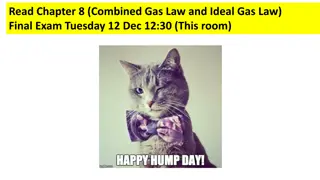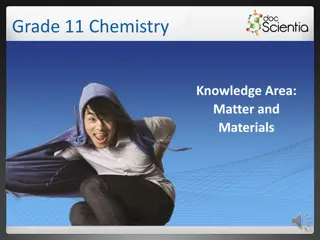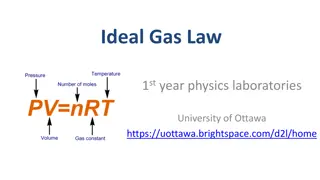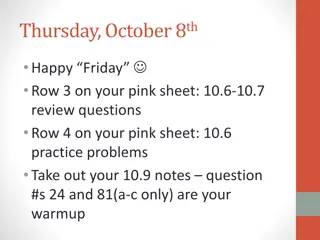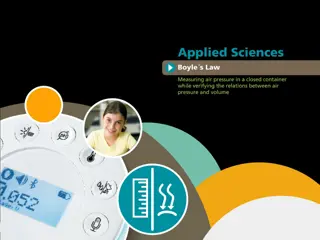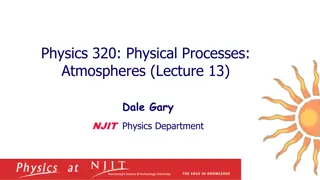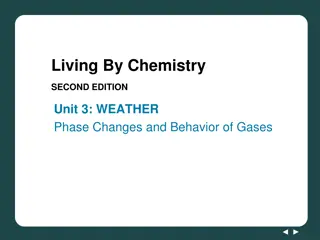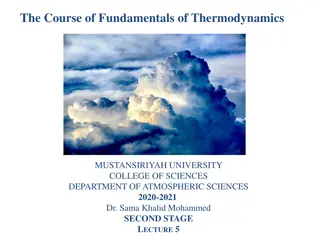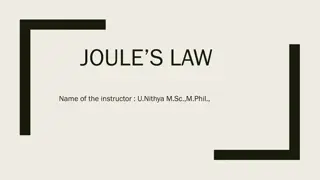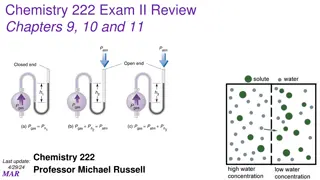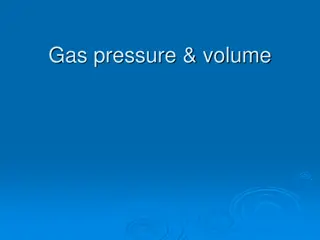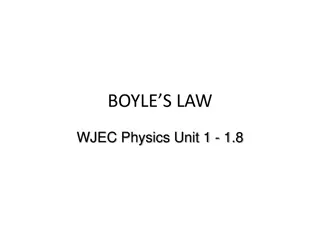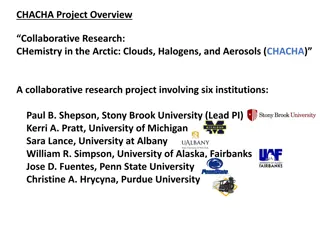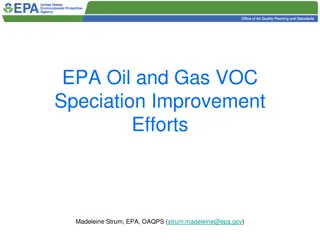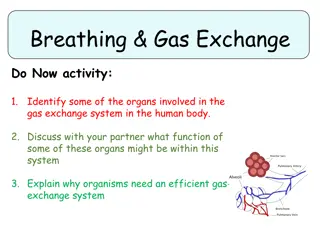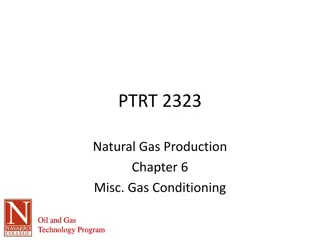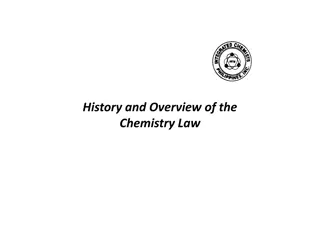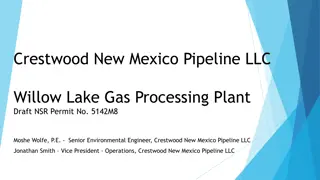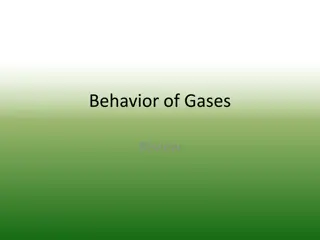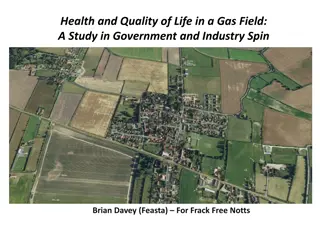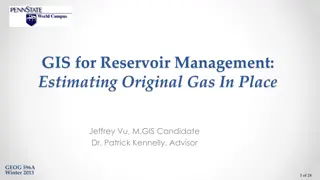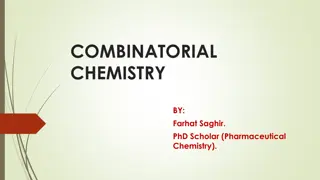Understanding the Ideal Gas Law in Chemistry
Explore the concepts of the ideal gas law, including Avogadro's principle and gas stoichiometry at non-STP conditions. Learn how to apply the law to calculate pressure, volume, and moles of gases under various conditions with practical examples provided.
Download Presentation

Please find below an Image/Link to download the presentation.
The content on the website is provided AS IS for your information and personal use only. It may not be sold, licensed, or shared on other websites without obtaining consent from the author. Download presentation by click this link. If you encounter any issues during the download, it is possible that the publisher has removed the file from their server.
E N D
Presentation Transcript
A. Avogadros Principle Equal volumes of gases contain equal numbers of moles at constant temp & pressure true for any gas V= k V n n
A. Ideal Gas Law Merge the Combined Gas Law with Avogadro s Principle: PV T n nT PV V = k = R UNIVERSAL GAS CONSTANT R=0.0821 L atm/mol K R=8.315 dm3 kPa/mol K You don t need to memorize these values!
A. Ideal Gas Law PV=nRT UNIVERSAL GAS CONSTANT R=0.0821 L atm/mol K R=8.315 dm3 kPa/mol K You don t need to memorize these values!
C. Ideal Gas Law Problems Calculate the pressure in atmospheres of 0.412 mol of He at 16 C & occupying 3.25 L. GIVEN: P = ? atm n = 0.412 mol T = 16 C = 289 K V = 3.25 L R = 0.0821L atm/mol K WORK: PV = nRT P(3.25)=(0.412)(0.0821)(289) L mol L atm/mol K K P = 3.01 atm
C. Ideal Gas Law Problems Find the volume of 85 g of O2 at 25 C and 104.5 kPa. GIVEN: V=? n=85 g T=25 C = 298 K P=104.5 kPa R=8.315 dm3 kPa/mol K WORK: 85 g 1 mol = 2.7 mol 32.00 g PV = nRT (104.5)V=(2.7) (8.315) (298) kPa mol dm3 kPa/mol K K V = 64 dm3 = 2.7 mol
IV. Gas Stoichiometry at Non- STP Conditions
A. Gas Stoichiometry Liters of a Gas: STP - use 22.4 L/mol Non-STP - use ideal gas law Moles Non-STP Given liters of gas? start with ideal gas law Looking for liters of gas? start with stoichiometry conv.
B. Gas Stoichiometry Problem What volume of CO2 forms from 5.25 g of CaCO3 at 103 kPa & 25 C? CaCO3 CaO + CO2 5.25 g Looking for liters: Start with stoich and calculate moles of CO2. ? L non-STP 5.25 g CaCO3 1 mol CaCO3 100.09g CaCO3 1 mol CO2 1 mol CaCO3 = .0525 mol CO2 Plug this into the Ideal Gas Law to find liters.
B. Gas Stoichiometry Problem What volume of CO2 forms from 5.25 g of CaCO3 at 103 kPa & 25 C? GIVEN: P=103 kPa V = ? n=.0525 mol T=25 C = 298 K R=8.315 dm3 kPa/mol K WORK: PV = nRT (103 kPa)V =(.0525mol)(8.315dm3 kPa/mol K) (298K) V = 1.26 dm3 CO2
B. Gas Stoichiometry Problem How many grams of Al2O3 are formed from 15.0 L of O2 at 97.3 kPa & 21 C? 4 Al + 3 O2 2 Al2O3 15.0 L non-STP ? g GIVEN: P=97.3 kPa V = 15.0 L n=? T=21 C = 294 K R=8.315 dm3 kPa/mol K WORK: PV = nRT (97.3 kPa) (15.0 L) = n (8.315dm3 kPa/mol K) (294K) Given liters: Start with Ideal Gas Law and calculate moles of O2. NEXT n = 0.597 mol O2
B. Gas Stoichiometry Problem How many grams of Al2O3 are formed from 15.0 L of O2 at 97.3 kPa & 21 C? 4 Al + 3 O2 2 Al2O3 15.0L non-STP ? g Use stoich to convert moles of O2 to grams Al2O3. 0.597 mol O2 2 mol Al2O3 3 mol O2 101.96 g Al2O3 1 mol Al2O3 = 40.6 g Al2O3


